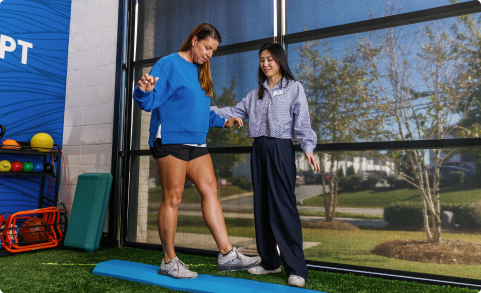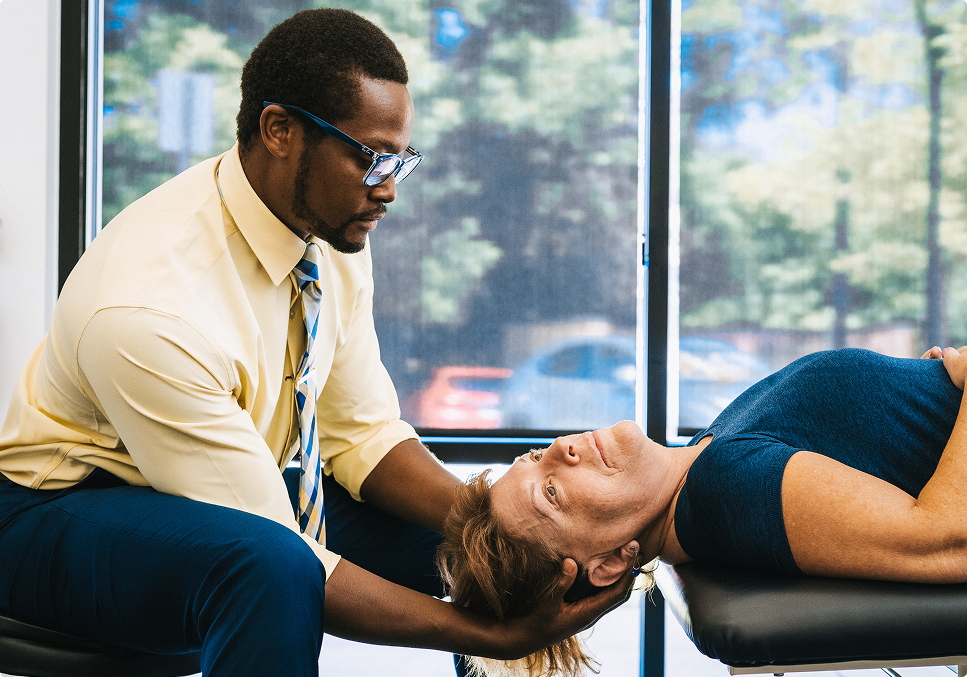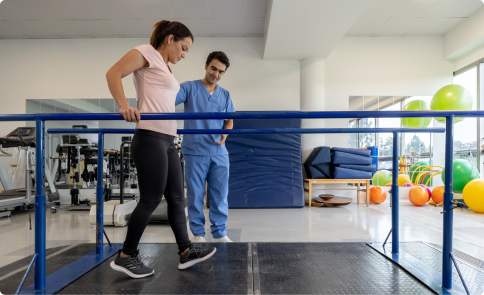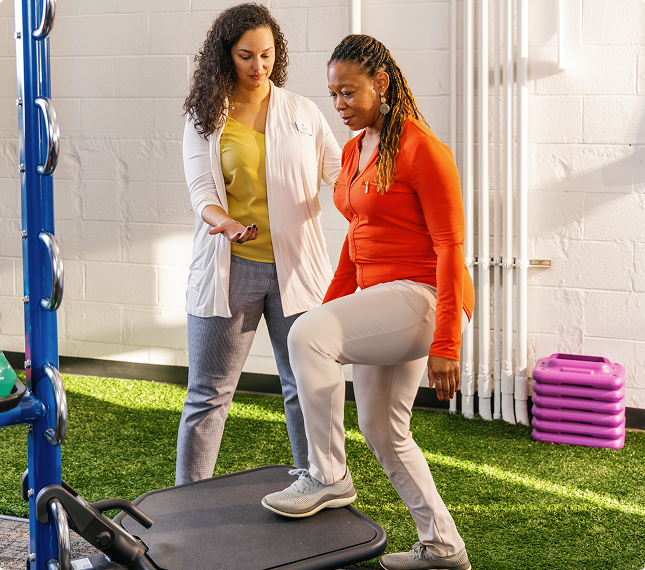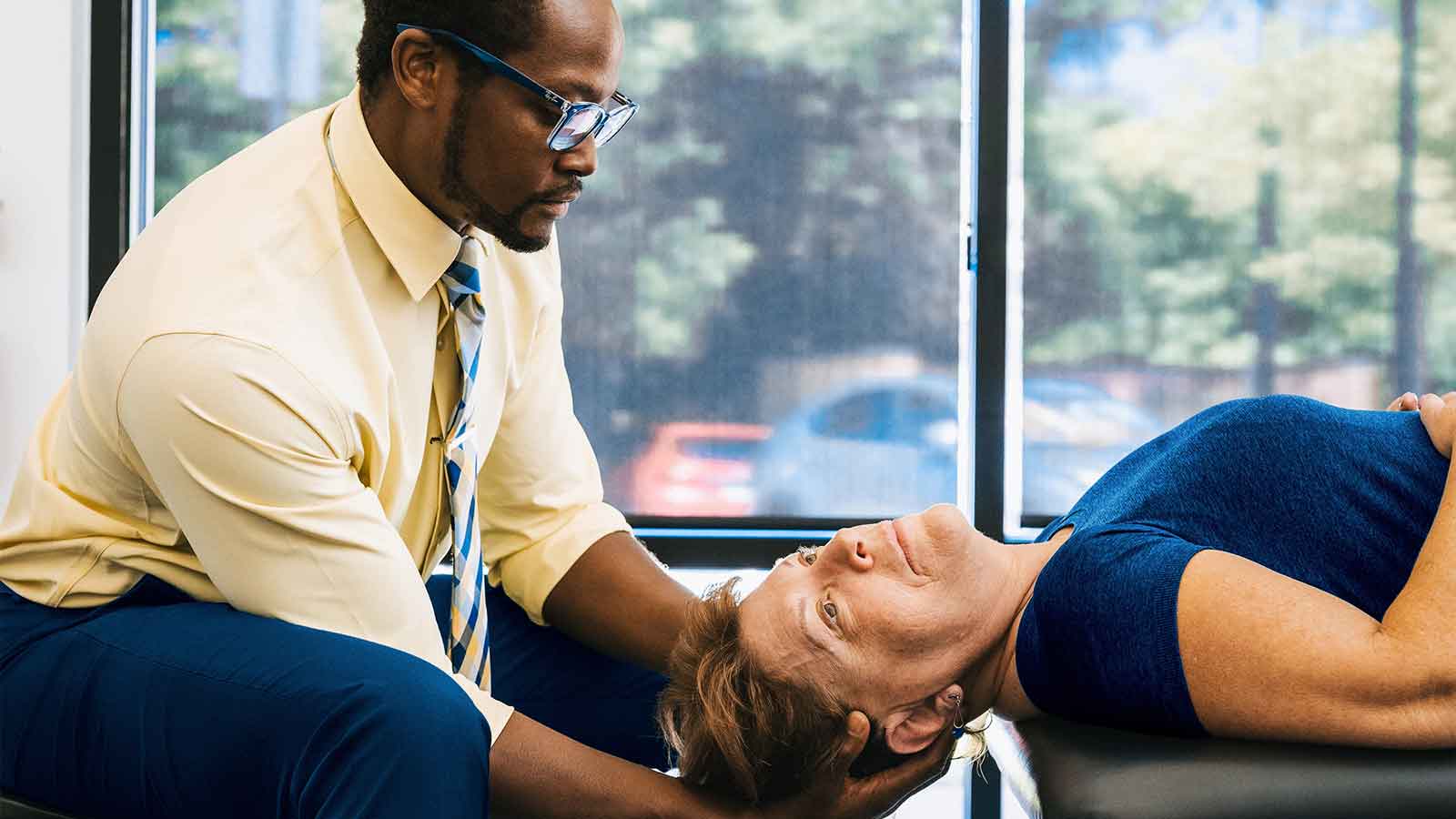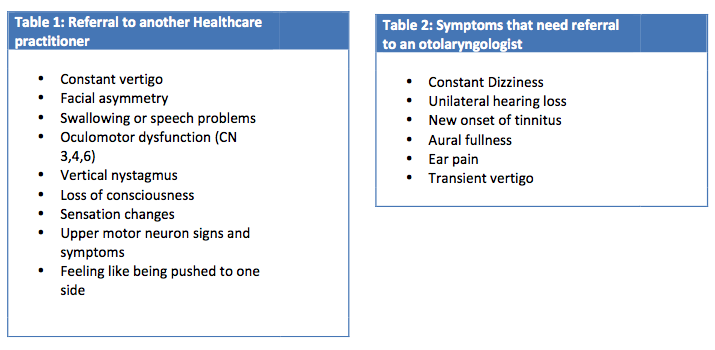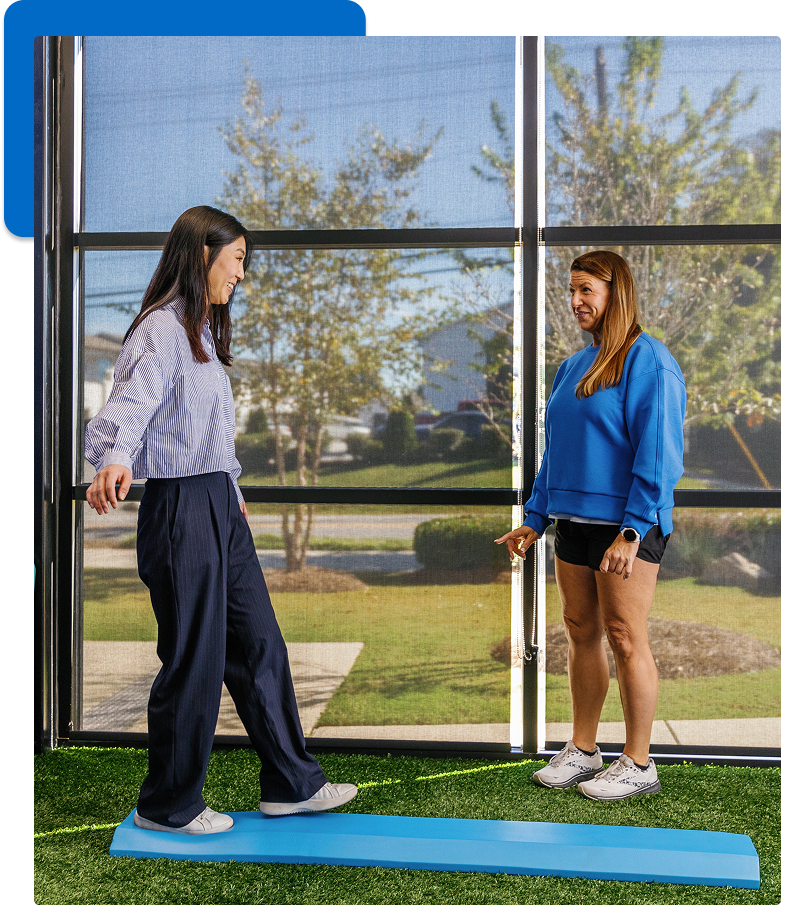
Understanding Your Condition
What Causes Balance Problems?
Balance problems can happen when the body’s balance system (which includes the inner ear, muscles, joints, and brain) is not working properly.
Many factors can affect balance, including:
- Inner ear disorders: Conditions like vertigo or Meniere’s disease can affect your vestibular system, which is responsible for your sense of balance.
- Neurological issues: Parkinson’s disease, multiple sclerosis, stroke and other neurological conditions can impact your nervous system’s ability to coordinate movement and balance.
- Musculoskeletal weaknesses: Reduced muscle strength, especially in the lower body, can compromise your stability and increase fall risk.
- Medications: Some medications may cause dizziness or affect your balance as a side effect.
- Vision problems: Poor eyesight can make it difficult to navigate your environment safely.
- Aging and Reduced Mobility: As people get older, changes in muscle strength, reaction time, and vision can make balance more difficult.
